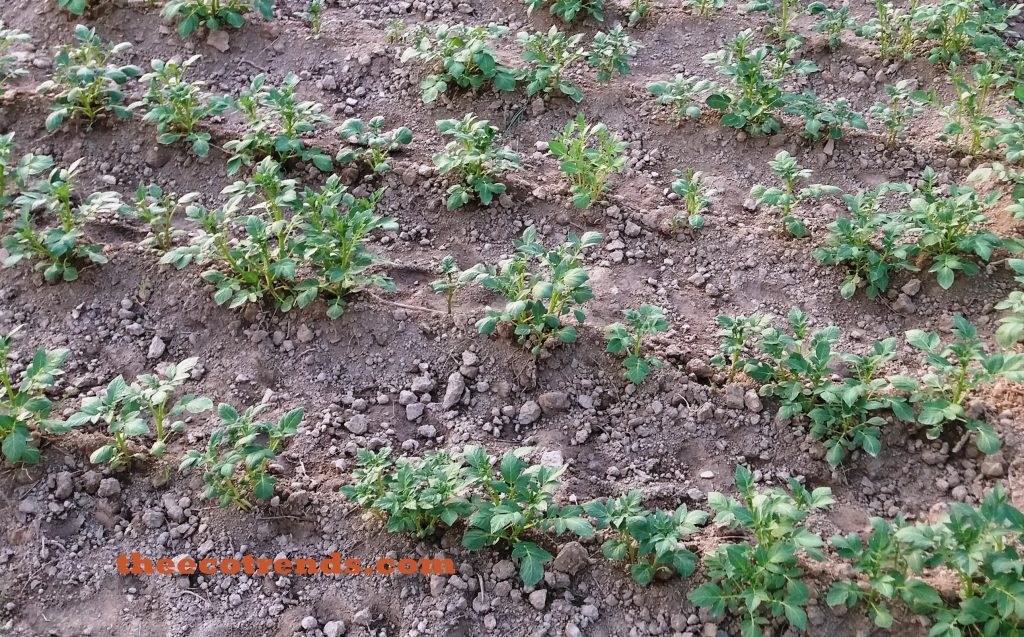When a new plant is developed or caused to develop through stem, root or leaf the method is called as vegetative reproduction. In other words, vegetative reproduction means- reproduction through anyone of the vegetative parts of the plant.
Methods of vegetative propagation
There are two methods of vegetative propagation-
(a) Natural Methods, and
(b) Artificial Methods
(a) Methods of Natural Vegetative Propagation
(1)Vegetative Propagation through roots as in Guava, Sesam, Sagwan etc. Roots of these plants have buds that develop into new plants under favourable conditions.
(2)Vegetative propagation through stems as in Pistia, Eichornia, doob(Cynodon), Underground stems (Potato, Ginger, Turmeric, Banana etc.).

(3) Vegetative Reproduction through leaves- as in ferns, Bryophyllum etc.
(b) Methods of Artificial Vegetative Propagation
In the modern world of science man has got astonishing success in horticulture through artificial ways. Some of the popular methods of artificial propagation in plants are listed below-
(1) Grafting as in Citrus, Grape etc.
(2) Cutting as in Sugarcane, Tea, Bougainvillea, Rose, Cactus etc.
(3) Layering as in Chameli, Juhi etc.
(4) Budding as in rose plant.
II. Benefits from vegetative propagation
(i) Seeds of some plants are not viable. These plants can be grown through vegetative propagation for example Sugarcane, Banana, Potato, Seedless grape etc.
(ii) Plants with seeds of high dormancy can be grown easily through this process.
(iii) Through this method a big population of similar properties can be maintained.
III. Harmful Effects of Vegetative Propagation
Plants grown through vegetative propagation conserve parental traits. But these do not have hereditary variations. Due to this, such plants fail to adjust with environment. It means these plants cannot adapt with the changing conditions of environment. As a result these plants are prone to diseases which lead to less production. Many of these plants perish under adverse environmental conditions.
Spore Formation
Fungi like Bread Mould develop erect filaments from their hyphae. These erect threads are called as sporangiophores.
Sporangiophores bear bulb like structure at their ends. These bulbous structures are called as sporangia (singular- sporangium).
A number of spores are formed by repeated divisions of the nucleus of a single sporangium. These spores are nucleated and are surrounded by thick coverings.
When internal pressure increases sporangium bursts and spores get scattered.
Spores germinate under moist and favourable conditions to give birth to new hyphae and mycelia.
A group of hyphae are called mycelium.
This process of asexual reproduction in fungi (as in Rhizopus) is called as spore formation.
Innumerable spores are released from the sporangium. These spores germinate to give rise to new hyphae. A single hypha can further produce new branches to form mycelium.
In adverse conditions each spore forms a cyst around it which protects it against adverse conditions. When conditions become favourable the cyst breaks down and the spore starts germinating.




